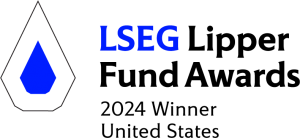.jpg)
The Adaptive Markets Hypothesis
Learn about the adaptive markets hypothesis.
Virtus AlphaSimplex Managed Futures Strategy Fund
The Fund pursues an absolute return strategy that seeks to provide long-term capital appreciation. The AlphaSimplex strategy uses a pure trend-following approach to take advantage of momentum in a range of liquid futures and forward contracts across global equity, bond, currency, and commodity markets.

Virtus AlphaSimplex Managed Futures Strategy Fund
Best Fund over 5 years (Class R6) and over 10 years (Class I) among Alternative Managed Futures Funds
The currency for the calculation corresponds to the currency of the country for which the awards are calculated and relies on monthly data. Classification averages are calculated with all eligible share classes for each eligible classification. The calculation periods extend over 36, 60, and 120 months. The highest Lipper Leader for Consistent Return (Effective Return) value within each eligible classification determines the fund classification winner over three, five, or 10 years. For a detailed explanation, please review the Lipper Leader Methodology Document.
U.S. local classifications are used in the United States, rather than Lipper Global classifications – Institutional funds are included in the universe of eligible funds – Since Lipper Leader scores are not calculated for money market funds these classifications are excluded from all fund award calculations. Additionally, S&P 500 Index funds, S&P Midcap 400 Index funds, equity leverage funds, specialty diversified equity funds, specialty fixed income funds, specialty/miscellaneous funds, other states municipal debt funds, other states intermediate municipal debt funds, and other states short/ intermediate municipal debt funds are not eligible to receive classification awards. Only one share class (the one with the best Lipper Leader score) is used for each portfolio in determining asset class and overall awards – Some funds may be excluded from award consideration if, in the opinion of LSEG Lipper’s Research staff, the portfolio has undergone too many classification changes or changed classifications recently. The calculation periods are through the end of November of the respective evaluation year.
LSEG Lipper Fund Award, ©2024 LSEG. All rights reserved. Used under license.
AlphaSimplex is a systematic alternatives manager, founded in 1999, focused on delivering quantitative investment strategies that are attuned to changing market dynamics.

Chief Investment Officer, Portfolio Manager
Industry start date: 2007
Start date as fund Portfolio Manager: 2014

Chief Research Strategist, Portfolio Manager
Industry start date: 2008
Start date as fund Portfolio Manager: 2018
.jpg)
Senior Research Scientist, Portfolio Manager
Industry start date: 2006
Start date as fund Portfolio Manager: 2014

Senior Research Scientist, Portfolio Manager
Industry start date: 2003
Start date as fund Portfolio Manager: 2017

Portfolio Manager
Industry start date: 1993
Start date as fund Portfolio Manager: 2010
Managed futures strategies have historically had low long-term correlation to traditional stocks and bonds, giving them the potential to provide much-needed diversification.
Dynamically taking long and short positions in a broad range of global equity, fixed income, currency, and commodity markets allows for the potential to profit from rising or falling markets, as long as there are identifiable trends.
'Crisis alpha' is the potential opportunity from persistent trends during periods of market stress or crisis. By adapting to the circumstances of each crisis, and investing in highly liquid assets, Managed Futures strategies can take advantage of trends across a diversified group of global asset classes to provide positive returns even when other strategies tend to struggle.
| % of risk allocation |
||
|---|---|---|
| Equities | ||
| NASDAQ 100 (US) | Long | 1.04% |
| NSE IFSC Nifty 50 (India) | Long | 1.01% |
| DJ EURO STOXX 50 (Europe) | Long | 0.85% |
| S&P 500 (US) | Long | 0.70% |
| FTSE Taiwan (Taiwan) | Long | 0.67% |
| Fixed Income | ||
| US 2-Year Note | Short | 1.00% |
| German 2-Year Bond (Schatz) | Short | 0.89% |
| French 10-Year Bond (OAT) | Short | 0.70% |
| SOFR | Short | 0.54% |
| EURIBOR | Short | 0.50% |
| Currencies | ||
| Euro | Short | 1.36% |
| South African Rand | Long | 1.09% |
| Japanese Yen | Short | 1.05% |
| Swiss Franc | Short | 0.70% |
| New Zealand Dollar | Long | 0.56% |
| Commodities | ||
| Copper | Long | 1.94% |
| Gold | Long | 1.57% |
| Silver | Long | 1.52% |
| Corn | Short | 0.86% |
| Brent Crude | Long | 0.83% |
| Asset Class | % of risk allocation |
|---|---|
| Equities | 30% |
| Fixed Income | 19% |
| Currencies | 19% |
| Commodities | 32% |
| Total Risk Budget | 100% |
| Number of Long Positions | 52 |
| Number of Short Positions | 42 |
Source: AlphaSimplex Group, LLC. The risk allocations presented are intended to illustrate the risk levels associated with the individual portfolio holdings included in the Fund. The top active exposures are determined by the ex-ante annualized volatility for the notional contract value in U.S. dollars of the Fund’s futures and/or forward positions. These are calculated as of month-end. Percent of risk budget estimates are based on ex-ante asset class volatility measures relative to the sum of these volatility measures across asset classes. The Fund’s performance and risk information provided above is unaudited and has been computed by AlphaSimplex based on unaudited figures compiled from internal data, which may be subject to revisions. Accordingly, while this data was obtained from sources believed to be reliable, AlphaSimplex provides no assurances as to its accuracy or completeness. Portfolio asset class exposure and positions are subject to change.
Performance data quoted represents past results. Past performance is no guarantee of future results and current performance may be higher or lower than the performance shown. Investment return and principal value will fluctuate, so your shares, when redeemed, may be worth more or less than their original cost.
The Index shown represents the Fund's performance index, which may differ from the Fund's regulatory index included in the Fund's Prospectus.
| Investing for Uncertainty: Diversify across market regimes with managed futures | |
| Delivering Liquid Alts in Traditional Portfolio | |
| Virtus AlphaSimplex Managed Futures Strategy Fund (ASFYX) Morningstar Report | |
| An Introduction to Managed Futures | |
| Themes of 2023 | |
| From Bears to Bulls? | |
| Crisis or Correction: Managing Expectations for Managed Futures and Crisis Alpha | |
| Correlations, Inflation, and Interest Rates | |
| Virtus Alternative Funds Menu | |
| Bonds Behaving Badly | |
| An Introduction to Managed Futures | |
| From Bears to Bulls? |
Investors should carefully consider the investment objectives, risks, charges and expenses of any Virtus Mutual Fund before investing. The prospectus and summary prospectus contains this and other information about the fund. Please contact your financial representative, call 1-800-243-4361 to obtain a current prospectus and/or summary prospectus. You should read the prospectus and/or summary prospectus carefully before you invest or send money.
Performance data quoted represents past results. Past performance is no guarantee of future results and current performance may be higher or lower than the performance shown. Investment return and principal value will fluctuate, so your shares, when redeemed, may be worth more or less than their original cost.
Average annual total return is the annual compound return for the indicated period. It reflects the change in share price and the reinvestment of all dividends and capital gains. NAV returns do not include the effect of any applicable sales charges. POP and w/CDSC returns include the effect of maximum applicable sales charges.
Returns for periods of less than one year are cumulative total returns.
1 Yields/Distributions: 30-day SEC Yield is a standardized yield calculated according to a formula set by the SEC, and is subject to change. 30-day SEC Yield (unsubsidized) is the 30-day SEC Yield without the effect of applicable expense waivers. Distribution Rate is calculated by (a) annualizing the latest income distribution for fixed income funds or funds less than 1 year old, or (b) summing all income distributions over the preceding 12 months for all other funds, and dividing by the NAV on the last business date of the period, unless otherwise indicated. The Distribution Rate may be comprised of ordinary income, net realized capital gains and returns of capital.
2 Distribution History: Distributions are represented on a cash basis and may be reclassified at year end for tax purposes. The Fund will send you a Form 1099-DIV for the calendar year that will tell you how to report these distributions for federal income tax purposes. STCG: Short Term Capital Gain, LTCG: Long Term Capital Gain
3 Risk Statistics: R2 is a statistical measure that represents the percentage of a fund or security's movements that can be explained by movements in a benchmark index. Beta is a quantitative measure of the volatility of a given portfolio to the overall market. Alpha is a risk adjusted measure of an investment's excess return relative to a benchmark. A positive Alpha indicates that the investment produced a return greater than expected for the risk (as measured by Beta) taken. Standard Deviation measures variability of returns around the average return for an investment fund. Higher standard deviation suggests greater risk. Risk Statistics are calculated using 36 monthly returns.
4 Characteristics: For Equity Funds: Avg. Weighted Market Cap (bn): The sum of each security's weight within the fund (or index) multiplied by the security's market capitalization. Trailing P/E Ex-Negative Earnings: Per-share stock price divided by the latest 12-months Earnings per Share; Price/Cash Flow: Per-share stock price divided by the per-share operating cash flow; Price/Book: Per-share stock price divided by the latest 12-month per-share Book Value; 3-Year EPS Growth Rate: Average of earnings per share growth for latest 3-year period. The 3-Year EPS Growth Rate is not a forecast of the fund's performance.
4 Characteristics: For Fixed Income Funds: Effective Duration represents the interest rate sensitivity of a fixed income fund. For example, if a fund's effective duration is five years, a 1% increase in interest rates would result in a 5% decline in the fund's price. Similarly, a 1% decline in interest rates would result in a 5% gain in the fund's price.
Morningstar Disclosures:
The Morningstar Rating™ for funds, or "star rating", is calculated for managed products (including mutual funds, variable annuity and variable life subaccounts, exchange-traded funds, closed-end funds, and separate accounts) with at least a three-year history. Exchange-traded funds and open-ended mutual funds are considered a single population for comparative purposes. It is calculated based on a Morningstar Risk-Adjusted Return measure that accounts for variation in a managed product's monthly excess performance, placing more emphasis on downward variations and rewarding consistent performance. The top 10% of products in each product category receive 5 stars, the next 22.5% receive 4 stars, the next 35% receive 3 stars, the next 22.5% receive 2 stars, and the bottom 10% receive 1 star. The Overall Morningstar Rating for a managed product is derived from a weighted average of the performance figures associated with its three-, five-, and 10-year (if applicable) Morningstar Rating metrics. The weights are: 100% three-year rating for 36-59 months of total returns, 60% five-year rating/40% three-year rating for 60-119 months of total returns, and 50% 10-year rating/30% five-year rating/20% three-year rating for 120 or more months of total returns. While the 10-year overall star rating formula seems to give the most weight to the 10-year period, the most recent three-year period actually has the greatest impact because it is included in all three rating periods. Ratings do not take into account the effects of sales charges and loads.
© year Morningstar, Inc. All rights reserved. The information contained herein: (1) is proprietary to Morningstar and/or its content providers; (2) may not be copied or distributed; and (3) is not warranted to be accurate, complete, or timely. Neither Morningstar nor its content providers are responsible for any damages or losses arising from any use of this information. Past performance is no guarantee of future results.